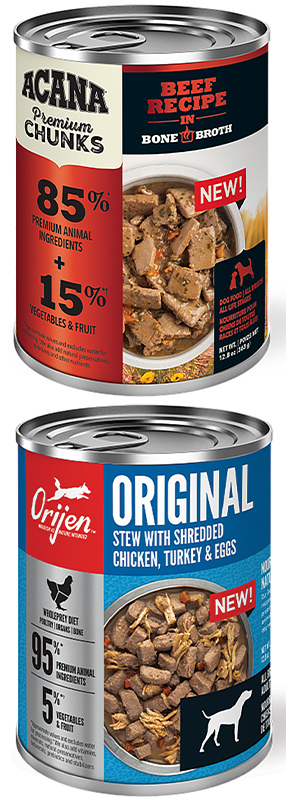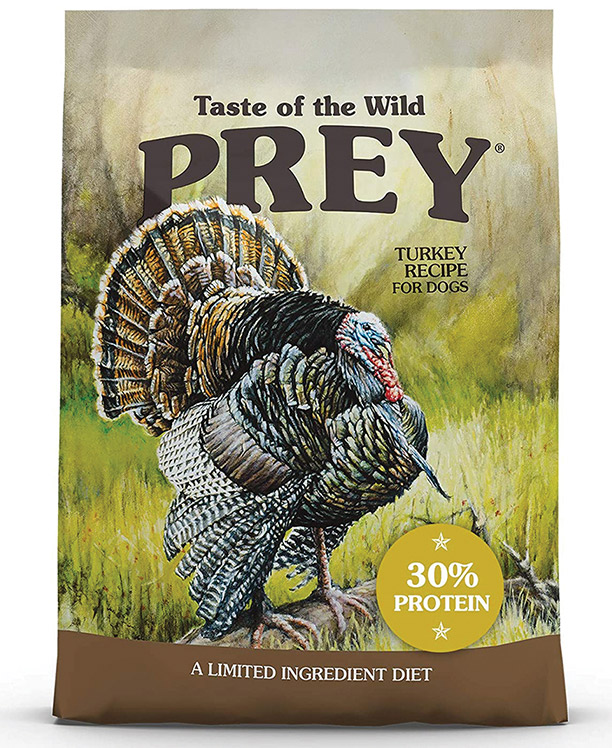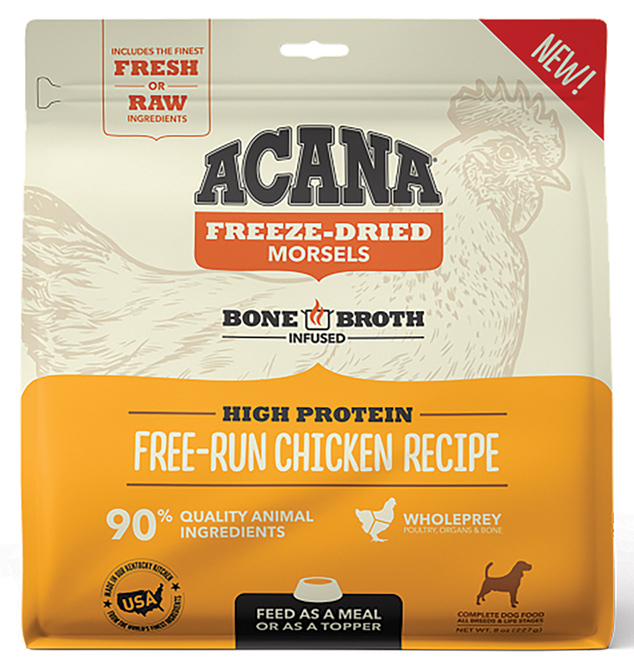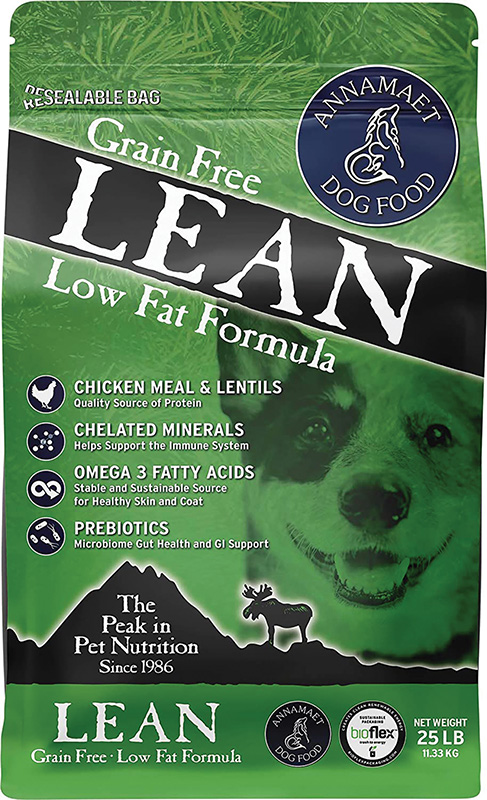This article was published in the June 2021 issue of Pet Food Processing. Read it and other articles from this issue in our June digital edition.
If not every problem in life has a ready answer, it isn’t for want of solution-based pet foods. Case in point: the chubby puppy.
“The biggest health problem facing dogs today is the same as it is with humans: obesity,” said Robert Downey, president and chief executive officer, Annamaet Petfoods, Hatfield, Pa.
Not coincidentally, then, Downey’s company has developed Annamaet Lean “to help fight obesity, with a high-protein, low-fat formula using additional carnitine without the added fiber.” (The product, he added, “provides an effective solution” for another problem he labeled a rising threat: pancreatitis.)
The continued proliferation of solution-based foods, treats and supplements is seen among the trend takeaways visible on store shelves now or, on the evidence of this spring’s all-virtual Global Pet Expo, headed for them soon. As Pet Food Processing reported in March, more than 250 companies — representing 700 brands and more than 10,000 products — attended the event bearing some 300 novel marketplace entries vying to crest trends or set new ones.
Ensuring robust consumer interest goes beyond spotting and following trends, though.
Waves of grain
After more than a decade of grain-free kibble leading the pack for high-end premium pet food, new crops of grain-forward products are rising.
“With the rise of ancient grains being used in human diets, we saw the desire to provide that to pets as well,” said John Kampeter, vice president of sales and marketing, Taste of the Wild Pet Food, Meta, Mo.
Indeed, NielsenIQ Retail Client Director Brad Boldridge shared at Global Pet Expo there had been a 19% shift in volume from grain-free to grain-inclusive pet foods from June 2018 to December 2020.
“We have seen a consistent interest in Taste of the Wild with Ancient Grains since it launched, and we believe this trend is here to stay,” Kampeter said.
“As consumer demands have evolved, we have welcomed this with open arms by diversifying longstanding product lines,” said John Kampeter, Taste of the Wild Pet Food.
Delivering on-trend pet foods and treats has become more challenging.
“Back when consumers were simply looking for a good ingredient profile, if you had a good ‘protein story,’ you were golden,” said Heather Govea, chief commercial officer, Alphia, a super-premium pet food and treat manufacturer headquartered in Bern, Kan. “But we have a completely different consumer now, and pet parents are looking to be more engaged and offer a greater experience for their pets.”
Making Govea’s point is the fleet pivoting of Taste of the Wild. The line, “originally developed to meet pet owners’ growing demand for pet food that was inspired by the protein sources of pets’ ancestral diets,” Kampeter said — emphasizing meat and including grain-free options — responded quickly to its customers’ perceived needs. Enter limited-ingredient and grain-inclusive diets with Taste of the Wild Prey and Taste of the Wild with Ancient Grains.
 According to NielsenIQ, 30% of dog owners and 34% of cat owners buy wet food, dry food and treats. (Source: Champion Petfoods)
According to NielsenIQ, 30% of dog owners and 34% of cat owners buy wet food, dry food and treats. (Source: Champion Petfoods)
The why, not the what
“It’s tough to deliver a differentiated solution for our customers that doesn’t look like every other brand,” Govea said. “One of the biggest challenges with an evolved or new product line is scaling products to be commercially viable. Sure, we can create interesting and intriguing product formats, but that doesn’t mean the retail price point will justify the product.”
New formulations must also pass a company’s stringent quality standards.
“Retailers often want the shiny new object, and some companies rush products to market to meet those needs, foregoing any product testing before release,” Downey added. “With two nutritionists on staff, we are still firm believers in proper product testing before release. Our products typically take over two years for product development and testing.”
That includes Annamaet Original Senior, which Downey said was reformulated 16 times in its journey to market.
“We ran a test batch and sent it out to three independent laboratories for testing to ensure all nutrients were at expected levels,” he said. “AAFCO feeding trials require only eight dogs to be used, and only six have to pass. Annamaet Original Senior was fed to over 80 dogs between the ages of 9 and 12 for six months. Only four blood tests are required for AAFCO feeding trials. By comparison, we measured 50 blood parameters.”
After the lab research comes careful market study.
“Before we offer a solution for a partner, we focus not just on a product segment but really try to better understand why a consumer is buying something instead of what they’re buying,” Govea said. “What is changing the way consumers think?
“We do that by taking a deep look at trends and analyzing market data. And, combined with our industry experience, we’re able to offer our partners solutions that go beyond just ‘brown and round.’ We’ve invested heavily to bring this proprietary knowledge, called Alphia Insights, to our partners. It’s this knowledge that helps differentiate our partners, as well as Alphia, in the market.”
 Brands have embraced the evolution of long-standing product lines to meet changing consumer preferences. (Source: Taste of the Wild Pet Food)
Brands have embraced the evolution of long-standing product lines to meet changing consumer preferences. (Source: Taste of the Wild Pet Food) Jen Beechen, vice president of marketing, Champion Petfoods, Auburn, Ky., also cited the importance of gathering and crunching data.
“Our team of pet nutrition experts is always applying sound science and referencing the latest research when developing new foods to go beyond trends alone,” she said. “By formulating recipes that align with current market trends and respect the nutritional needs of pets, we’re able to meet the demand from discerning pet lovers while simultaneously offering food and treats that help dogs and cats thrive.
“Then, we look to our most valued stakeholders — pet lovers, retailers and distributors — for feedback and information on the new products they’re looking for and why they’re looking for them.”
For example, when ORIJEN and ACANA stakeholders asked for wet food — “to increase their pet’s moisture intake, diversify the type of food they were offering their pet, or simply indulge their pet with a special meal topper,” Beechen said — their call was answered with new Champion products.
“In addition to pet lovers, retailers and distributors, we also rely on our in-house insights team to research, quantify and deliver market information to help us plan for the future,” she added.
 Freeze-dried toppers and other add-ins allow pet owners to elevate mealtime or customize a diet for specific health needs. (Source: Champion Petfoods)
Freeze-dried toppers and other add-ins allow pet owners to elevate mealtime or customize a diet for specific health needs. (Source: Champion Petfoods) Understanding the reasons behind changes in consumer preferences is important.
“What all these categories and segments in the market have in common are changes that happen not with product segments but with the consumer,” Govea said. “Alphia looks at not just which product segments are changing – we look at why they’re changing.”
Ninety-nine problems
“Products resulting from trends are typically solution-based,” Beechen said. “Our innovation team always thinks through how we can continue to offer a wide variety of foods to ensure there’s something for every cat and dog.
“Our new Acana Rescue Care for Adopted Dogs was developed through insights we garnered through shelter research and crafted by our in-house veterinarian and nutrition team. Our goal was to address the unique needs rescue dogs have when making the transition from the shelter to their forever home. This includes intentional ingredients like prebiotics, to support a healthy gut; fish oil, to promote healthy skin and coat; antioxidants, for immune support; and even botanicals like chamomile, which has known soothing effects.”
This fits within the established trend of tailored nutrition, the result of one-size-fits-all foods evolving into products that target ages, breeds and other variables with increasing specificity that imply unique solutions for each.
“When we think about trends like tailored nutrition, these all come down to pet parents’ increased engagement in the feeding experience,” Govea said. “Alphia was able to get ahead of these trends. For instance, we’re the leader in inclusion pieces. Because of the investments in our plant technology, we have the lowest standard deviation of inclusion pieces. This ensures pet parents have the same, repeatable experience with their pets. This consistency is incredibly important to our customers’ brands.”
But if consistency is covetable, sameness can present a hazard. What Beechen called “flavor fatigue,” she credited with ushering in trends such as pet food mixers and toppers.
“Pet parents have a hard time wrapping their heads around feeding the same product throughout the entirety of their pet’s life,” said Robert Downey, Annamaet Petfoods.
For Acana, that meant an opportunity to “elevate the product.” Its freeze-dried food, Beechen said, is “packed with 90% premium animal ingredients.” Reflecting a raw-foods boom in human eating, a strong driver of the growth of freeze-dried foods, Acana’s version also includes bone broth — making it, she said, “an enticing meal topper that can also be fed as a stand-alone meal.”
Having variety within those options appeals to the humans selecting a pet’s diet.
“Pet parents have a hard time wrapping their heads around feeding the same product throughout the entirety of their pet’s life,” Downey confirmed. “Annamaet has embraced this trend and now has two puppy formulas as well as two senior dog formulas, along with formulas called Annamaet Adult, Annamaet Small Breed and Annamaet Medium & Large Breed.”
Not that the company is limiting its notion of the solution-based to animal issues alone.
“Another worldwide problem is the growing depletion of our ocean fish stocks,” Downey said. “Some experts say the world’s fisheries may collapse by 2050 if we don’t do something, with 57% of the world’s fish stocks already fully exploited.
“Annamaet Petfoods is certified by the Marine Stewardship Council, which is the gold standard for marine sustainability,” he added — meaning that fish ingredients in its products have been sustainably caught. “Part of the sales of each product carrying the MSC eco logo go toward protecting our oceans. Annamaet Petfoods has three MSC-certified products, which would be considered solutions-based.”
Of particular importance when sharing the benefits of pet food and treat products, Downey cautioned against using hollow words when identifying brand claims. This is especially true for solution-based products.
 Pet diets designed for specific needs represent years of planning and testing, and support pet owner demands as they increasingly prioritize their pets’ health. (Source: Annamaet Petfoods)
Pet diets designed for specific needs represent years of planning and testing, and support pet owner demands as they increasingly prioritize their pets’ health. (Source: Annamaet Petfoods) “State feed regulators are really cracking down on the use of trigger words or phrases used not only on packaging but also on websites and in marketing materials,” Downey said. “Potentially a bigger and certainly more expensive problem is the growing number of class-action lawsuits that have been brought against pet food companies for using certain buzzwords on product labels and in their advertising.”
The more things change...
“When you develop a new product that is ahead of the curve or ahead of a trend, it is a great feeling,” Downey said.
But you can be sure: if your product works, there will soon be many copycat products on the market.
“Many years ago, one of the big pet food companies added a new vitamin source to its ingredient panel but misspelled the ingredient,” Downey shared. “Sure enough, within a few months several smaller companies soon had the same ingredient on their panels — and also misspelled it. I have always wondered if the company misspelled it on purpose to see how many other companies would do the same.”
Keep up with the latest pet food trends on our Trends page.




